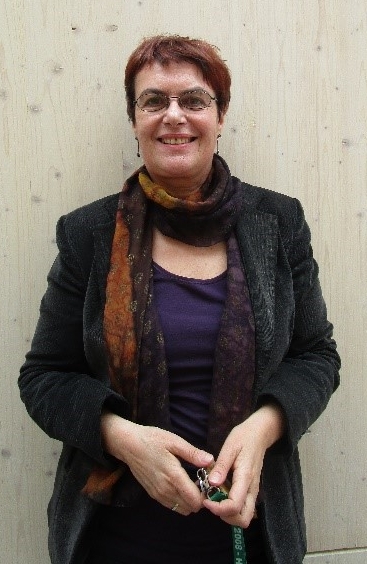
Katarina Čufar, PhD, Full Professor
Univerza v Ljubljani (University of Ljubljana, UL)
Katarina Čufar is a scientist at the Department of Wood Science and Technology, Biotechnical Faculty, University of Ljubljana. She has research and teaching experience in wood anatomy and wood science. Her main research topics are wood, less known wood species, tree growth, dendrochronology, wood and phloem formation, wood quality, wood in cultural heritage, wood in archaeology, prehistoric (Neolithic) pile dwellings. More about Katarina's research here, Katarina's publications here.
How did you arrive at your current position?
It has been a long road to my current position, although I have been working at the university since I graduated. I started as a young researcher and teaching assistant in times without the internet, where associations like IAWA (International Association of Wood Anatomists), conferences and visits helped us to make professional and personal contacts with scientists from all over the world. All along, I had to solve many challenges so that I could grow as a scientist and teacher. In the beginning, I worked on projects dealing with the properties of lesser-known tropical wood species and continued my work with forest dieback and the warning signals of dieback in tree tissues. As a young postdoc, I was invited to start a project to establish dendrochronology in our country. This allowed me and my collaborators to work with wood from various contexts, including waterlogged archaeological wood from the distant past and musical instruments. Dendrochronology of trees required the study of the effects of climate and climate change and the processes of tree growth and wood and bark formation. This helped advance wood science nationally and enabled much collaboration on an interdisciplinary and international level.
Which scientific question are you the most eager to answer?
All of our team's science questions are basically about wood and trees. They usually start with "Which wood species is this?" "How old is this wood?" and "When and under what conditions was this wood formed?" We think all of our scientific questions are important. With our collaborators, we are pleased and proud to have been able to determine when trees were cut for pile dwellings that existed more than 4,500 years ago. We are also pleased to contribute to the world's knowledge of dendrochronology and wood and bark formation in temperate and Mediterranean trees.
What is the future of your research?
The environment, human society and trees are threatened by climate change and extreme weather events. Our research will continue to focus on studying the changing environment to develop preventative measures for tree health and wood quality. We will also continue to study wood from historical and archaeological contexts.
Open Science, and especially Open Data, is highly debated on various levels. What is your opinion?
As a dendrochronologist, I understand the importance of research data and its proper archiving, sharing, and use. Therefore, I find the activities related to Open Science and Open Data very welcome. The Editorial Board of Les/Wood (www.les-wood.si), where I work as an editor, promotes open access to scientific articles and research data. In this way, we support the Research Data Alliance and related activities at the national and European level. It is necessary and fair to share the data and make the research results and publications accessible. Open access also guarantees that the data will not be lost.
How do you maintain your work-life balance?
Everyday life with family is significant, and the necessary daily housework must be done. Friends, sports and entertainment are also essential. Nevertheless, science and professional work play a big part in my life, so I always try to balance work and life.
How difficult it is to have a carrier in science? How you keep your motivation?
Like most scientists, I am very dedicated to my work. Curiosity and dedication keep me motivated. It is sometimes hard to be a scientist, but it is also a privilege. As a scientist, I have the work that inspires me, and I am surrounded by interesting people and have many friends from all over the world to collaborate with on different projects.
![]() This project has received funding from the European Union’s Horizon 2020 research and innovation programme under grant agreement N°952314.
This project has received funding from the European Union’s Horizon 2020 research and innovation programme under grant agreement N°952314.
